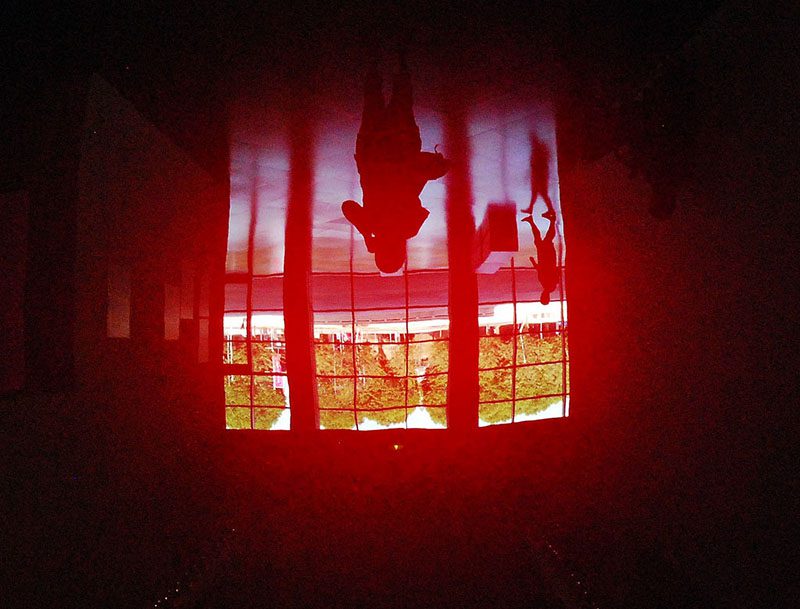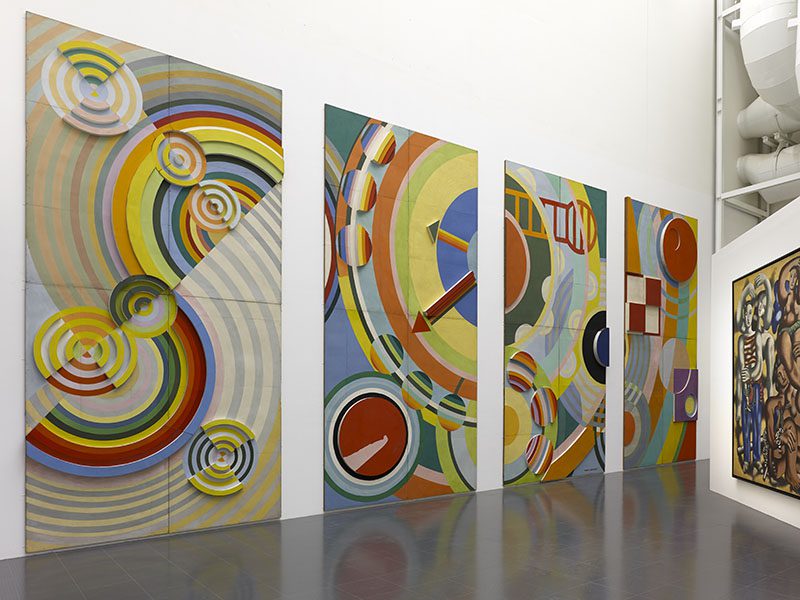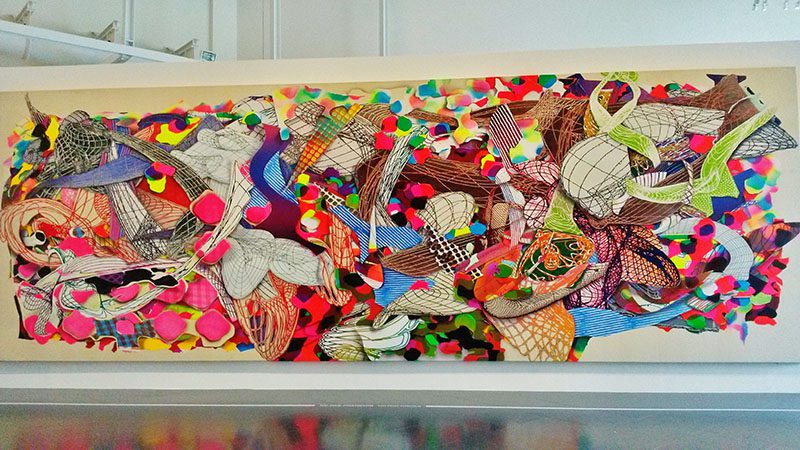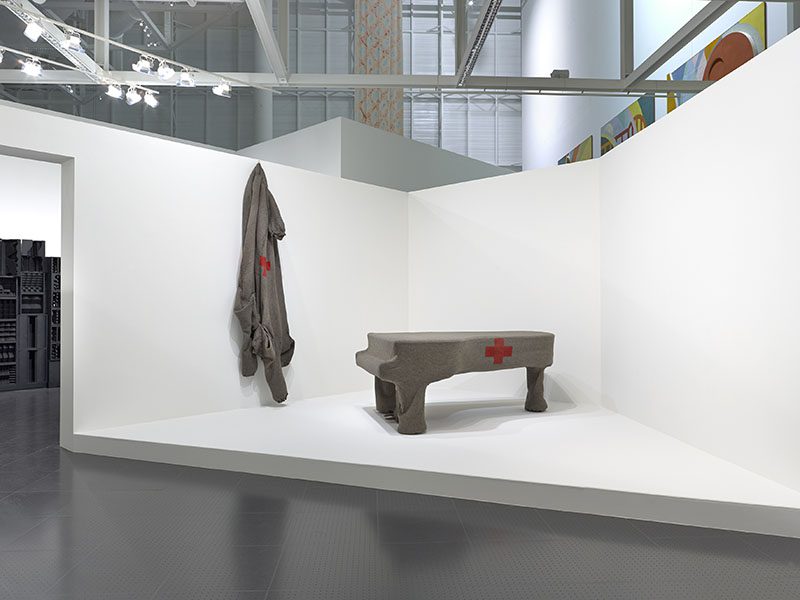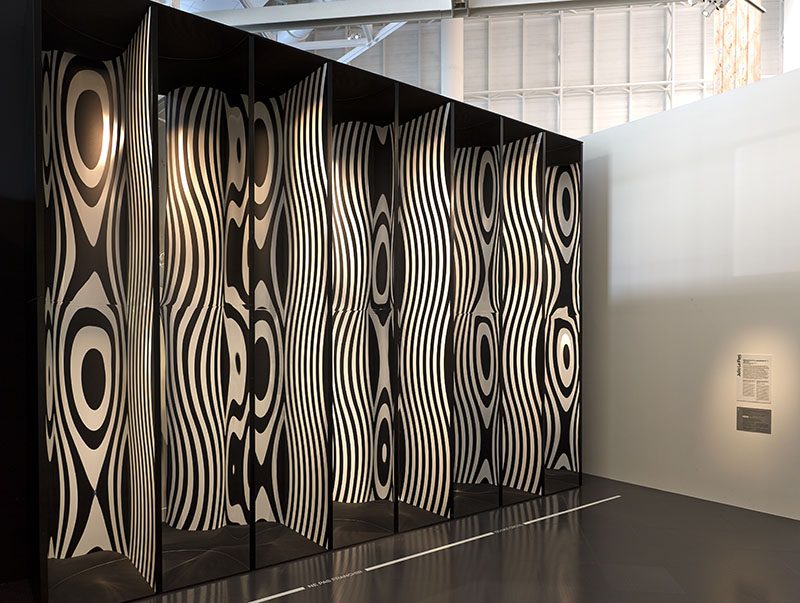ART-PRESENTATION: Beacons at Centre Pompidou-Metz
Based entirely on loans from the collection at Centre Pompidou/Musée national d’art moderne, the “Beacons” exhibition highlights a selection of masterpieces rarely shown to the public due to their monumental size. Staged inside de Grande Nef, a gallery of unparalleled dimensions in Europe, the exhibition is a rare opportunity, given their size, to view together 19 monumental works.
By Dimitris Lempesis
Photo: Centre Pompidou-Metz Archive
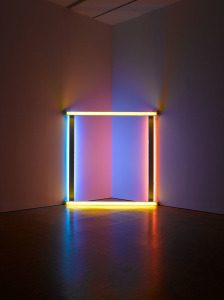 With no specific chronological order, the exhibition’s staging provides an overview of the primary movements in art since the start of the 20th century, from Pablo Picasso to Anish Kapoor including Sam Francis, Julio Le Parc, Joseph Beuys and Dan Flavin. In addition to the wall labels and texts normally posted for each work, special descriptions have also been provided for young visitors. Easy to see and read, these labels provide child-friendly texts so that young visitors may actively participate in their tour of Beacons. The spiritual dimension of “Untitled”, by Anish Kapoor, lies in his quest for an infinite, poetic world beyond the visible, and which can emerge from amidst our material reality. This meticulously polished reflective piece achieves this by literally overturning the surrounding space. The sensory experience produced by his use of a concave mirror profoundly upsets our perception and succeeds in rendering the void visible. Instead of reflecting a mimetic image of reality, these non-narcissistic mirrors create distortions and illusions, playing on the relationship between the void and the solid, interior and exterior, material and immaterial. The artist also emphasizes the work’s reflective properties by using a dark red that simultaneously absorbs and reflects the light. Created for the exhibition of Julio Le Parc at the Palais de Tokyo in 2013, “Déplacement du spectateur n°1” is a variation of the original work, “Cercles virtuels par déplacement du spectateur”, created in 1965 and now in the Centro Cultural General San Martín in Buenos Aires. It consists of a simple motif that distorts and creates optical effects when the viewer moves in front of it, thereby giving the viewer a key role in the activation of a work in constant metamorphosis. “Palombe” is an example of this complexification of Frank’s Stella formal vocabulary. Many of his works are inspired by classical literature and history. The work’s title, is a reference to the author of the 14th-century adventure novel, The Voyages and Travels of Sir John Mandeville, Knight. In 1962, while professor at the Kunstakademie in Düsseldorf, Joseph Beuys drew close to the Fluxus movement, with whose members he created several performances. “Homogenous Infiltration for Piano” stems from one of them. Beuys created it in July 1966, after interrupting a concert by Nam June Paik and Charlotte Moorman by pushing an imposing grand piano entirely covered with felt, into the room. The piece’s full title, “Homogenous Infiltration for Piano, The Greatest Contemporary Composer is the Thalidomide Child”, is a direct reference to one of the major pharmacutical scandals of the second half of the 20th century. Thalidomide, a drug prescribed to pregnant women from the 1950s, caused a spate of deformities in newborn babies. The two red crosses on either side of the piano, symbols of emergency, and whose appearence and normal functioning are hindered by this thick grey skin, become a symbol of these sacrificed children and their families condemned to silence. The other artists participating in the exhibition are: Joan Miró, “Yan Pei-Ming, Simon Hantaï, Robert Delaunay, Pablo Picasso, Fernand Léger, Louise Nevelson, Claude Viallat Orangey, Pierre Soulages, Pierre Alechinsky, Sam Francis, Joan Mitchell, Dan Flavin, & Robert Irwin.
With no specific chronological order, the exhibition’s staging provides an overview of the primary movements in art since the start of the 20th century, from Pablo Picasso to Anish Kapoor including Sam Francis, Julio Le Parc, Joseph Beuys and Dan Flavin. In addition to the wall labels and texts normally posted for each work, special descriptions have also been provided for young visitors. Easy to see and read, these labels provide child-friendly texts so that young visitors may actively participate in their tour of Beacons. The spiritual dimension of “Untitled”, by Anish Kapoor, lies in his quest for an infinite, poetic world beyond the visible, and which can emerge from amidst our material reality. This meticulously polished reflective piece achieves this by literally overturning the surrounding space. The sensory experience produced by his use of a concave mirror profoundly upsets our perception and succeeds in rendering the void visible. Instead of reflecting a mimetic image of reality, these non-narcissistic mirrors create distortions and illusions, playing on the relationship between the void and the solid, interior and exterior, material and immaterial. The artist also emphasizes the work’s reflective properties by using a dark red that simultaneously absorbs and reflects the light. Created for the exhibition of Julio Le Parc at the Palais de Tokyo in 2013, “Déplacement du spectateur n°1” is a variation of the original work, “Cercles virtuels par déplacement du spectateur”, created in 1965 and now in the Centro Cultural General San Martín in Buenos Aires. It consists of a simple motif that distorts and creates optical effects when the viewer moves in front of it, thereby giving the viewer a key role in the activation of a work in constant metamorphosis. “Palombe” is an example of this complexification of Frank’s Stella formal vocabulary. Many of his works are inspired by classical literature and history. The work’s title, is a reference to the author of the 14th-century adventure novel, The Voyages and Travels of Sir John Mandeville, Knight. In 1962, while professor at the Kunstakademie in Düsseldorf, Joseph Beuys drew close to the Fluxus movement, with whose members he created several performances. “Homogenous Infiltration for Piano” stems from one of them. Beuys created it in July 1966, after interrupting a concert by Nam June Paik and Charlotte Moorman by pushing an imposing grand piano entirely covered with felt, into the room. The piece’s full title, “Homogenous Infiltration for Piano, The Greatest Contemporary Composer is the Thalidomide Child”, is a direct reference to one of the major pharmacutical scandals of the second half of the 20th century. Thalidomide, a drug prescribed to pregnant women from the 1950s, caused a spate of deformities in newborn babies. The two red crosses on either side of the piano, symbols of emergency, and whose appearence and normal functioning are hindered by this thick grey skin, become a symbol of these sacrificed children and their families condemned to silence. The other artists participating in the exhibition are: Joan Miró, “Yan Pei-Ming, Simon Hantaï, Robert Delaunay, Pablo Picasso, Fernand Léger, Louise Nevelson, Claude Viallat Orangey, Pierre Soulages, Pierre Alechinsky, Sam Francis, Joan Mitchell, Dan Flavin, & Robert Irwin.
Info: Curators: Claire Garnier & Élodie Stroecken, Centre Pompidou-Metz, Parvis des Droits de l’Homme, Metz, Duration: Until 15/2/16, Days & Hours: Wed-Mon 10:00-18:00, www.centrepompidou-metz.fr

